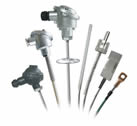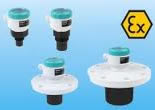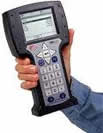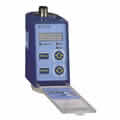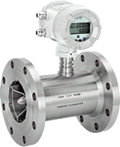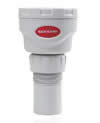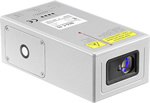Data logger
Data logger (or datalogger or data recorder) is an electronic tool that details the various physical parameters such as temperature, humidity, voltage and current, and .... output of industrial sensors such as thermocouples and other external devices to Measures and records time. The operation of the loggers is based on a digital processor (or computer connected to a sensor). Data loggers are usually small, battery-powered, portable, and equipped with a microprocessor and internal memory to store sensor data. Most current loggers connect to a PC via a USB port and use software to enable the data logger to view the data and analyze the collected data, while more expensive models have They are a local monitor or interface (keyboard, LCD) and can be used as a standalone device.
Data loggers come in a variety of models, from simple devices for measuring one or two parameters such as temperature and humidity to very specific measuring devices designed for custom measurements in a variety of applications. In older models, loggers are statically able to measure a parameter in a fixed way, and in advanced models with more programmability and features.
One of the advantages of using a logger is that it automatically collects data 24 hours a day. Once activated, data loggers are able to work normally and unsupervised to measure and record information for the duration of the monitoring. This provides a comprehensive and accurate picture of the environmental conditions for monitoring, such as air temperature and relative humidity.
The cost of data recording equipment such as data loggers has decreased over the years, and this is due to the improvement of technology. Single-channel data loggers cost around $ 25 and up, while complex samples can cost hundreds or thousands of dollars.
Although stability or recorder has the same function of data logger, but the main difference between these two equipments in different features that a recorder such as screen, the ability to connect to the network, high memory, etc., and data logger is useless. These devices are usually small and portable and are powered by batteries. In addition, they are equipped with a microprocessor and have internal memory for data storage and a number of sensors . Some data loggers are connected to a computer and can be Activate them using software and view and analyze controlled data
General data logger properties
1- Number of channels: The number of channels indicates the number of sensors and converters that can be connected to the data logger at the same time.
2- Sampling frequency or sample rate: This number indicates the number of times that the data logger reads the data of each sensor and transmits it to the computer or memory.
3- Type of connector sensor: Usually each data logger supports special sensors and converters. For example, a data logger may only be able to support RTD thermal sensors but may not be able to support thermocouples.
Usually each data logger is equipped with a software that makes it possible to apply its settings and view the graphs obtained from the sensors during sampling.
A basic parameter in data logger systems is the ability to record information for a long time, for example several years. To achieve this goal, data logger systems need to have high-volume storage media and very low power consumption.
Application of the data logger includes the following:
- Record information at an unattended weather station (such as wind speed / wind direction, temperature, relative humidity, solar radiation).
- Record information at stations without hydrographic care (such as water level, water depth, water flow, water pH, water conductivity)
- Automatic registration of soil moisture information
- Automatic gas pressure information recording
- Measurement of temperature (humidity, etc.) of perishable materials during shipment
- Popular products

German laser thermometer with external thermocouple K tool 1725

Level controller / roller blade switch for solids and powders, model 1872

Industrial Laser Thermometer Instrument 1727

12-channel temperature recorder thermocouple tool 1189


